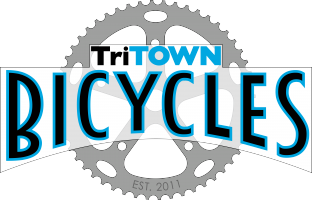How to Make an Effective Pedal Stroke
- Posted on
- By Antonio Gonzalez
- Posted in training/coaching
- 4
Summary: The best cyclist push down on the pedals the hardest without impeding the pedal movement at any other part of the stroke.
I've been asked countless times how to make a 'perfect pedal stroke'. In many cases, the athlete tells me they try to pull across the bottom, pull up on the backstroke, kick across the top, push down, then repeat. That's essentially 4 different movements all happening at 90 revolutions per minute, per side. Or 720 different thoughts per minute. Not likely to happen! At least not with any consistency to actually be effective. The good news is that the pedal stroke is more simple than many people try to make it out to be.
Any conversation about the cycling pedal stroke should start with a quick review of the human body. As an animal, we are very good at pushing down. When we walk, run, stand, etc, we use our 'hip opener' muscles to push down against the earth. Our glutes, hamstrings, quads, and calves all pitch in to help with this movement. In all, about 9 muscle groups help with the downward movement of the pedal stroke, while only 1-2 muscle groups are engaged with the upstroke. To think that you could have an 'even' pedal stroke, applying even power throughout the entire pedal circle implies that 2 small muscle groups could produce the equivalent power of 9. Not likely to happen. The best we can hope for is that your leg muscles fire in a way to get your recovering leg up and out of the way, and back to the downstroke so that it can do what the body does best- push down.
I'm not saying you should stomp downwards only- there is a bit of a follow through at the bottom of the stroke, and a bit of early engagement at the top is good too, but the focus of your power should be on the downstroke. If you think of anything, think of using the hips as the source of your downward power, not the knee. If you're sore in your glutes after a ride, you've done something right.
So where did this 'perfect' pedal stroke concept come from? I believe people confuse mechanical efficiency with gross efficiency. A mechanically perfect stroke would apply even power across all angles of the pedal stroke. Maybe an electric motor would be capable of this- but we're not an electric motor. By design we're good at only a couple things, and pushing down is one of them. Additionally, the bicycle is an efficient enough machine that after a few pedal strokes of hitting a certain power output during the downstroke, the bike will move forward as if you're holding that power continuously. For example, hit 300 watts once per pedal stroke on the downstroke, and after a few pedal strokes the bike will roll forward as if you're sustaining 300w across the entire stroke. Alternatively, hold a perfectly even 280w around the entire pedal circle, and the bike will move forward at your peak power- in this case 280w.
Are there times to pull up on the pedal stroke? Most certainly- especially when accelerating from a stop or into a sprint. For the average cyclist or triathlete though, the bulk of racing and training do not require a focus on the upstroke. Does this mean single-leg drills or devices like power cranks are useless? I don't believe so- as many cyclist have a 'lazy back stroke' and are not properly lifting their leg up and out of the way. As a warmup or warm down exercise I recommend single-leg drills on a regular basis.
My goal with this article is not to discredit those who have felt benefits from focusing on the backstroke or have spent hours on a Computrainer trying to perfect their 'spin scan' chart. If you feel like it helps then it probably does. But for most riders the secret to faster riding is not in creating 'a perfect circle'. It's in developing the strength to push down harder, and the endurance to sustain it.
About the Author:
Antonio Gonzalez is the owner of Tri Town Bicycles in Boise, Idaho. He is a endurance coach, bicycle fitter, and veteran of the cycling and triathlon industry for over 20 years.
Resources:
Mechanical efficiency vs gross efficiency.
Muscles used during the pedal stroke.
How elite endurance cyclist actually pedal a bike.

Antonio - interesting read. What are your thoughts on cadence relative to power and pedaling efficiency?
As a writer and optimizer of websites, I find this article by Antonio one of the most well written articles I've read.
applying power on he up stroke for 30 seconds gives the other working muscles a brief rest if you are coming undone. Try it
as Matt said "you need to know when to apply power". On the flats a perfect circle (not applying power or pedaling vertically) saves your legs for attack on a climb. "One leg helps the other"